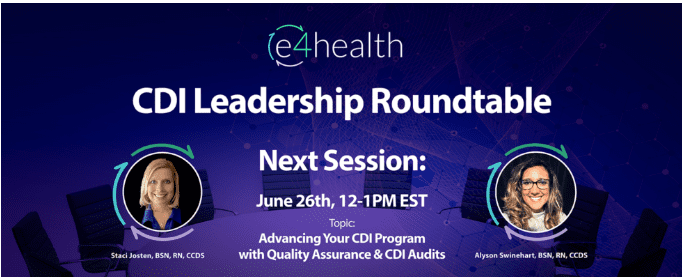Atrial Fibrillation (AF)
Paroxysmal AF Definition: Episodes terminate either spontaneously or with treatment within 7 days; may recur
Persistent AF Definition: AF is continuous and lasts > 7 days, fails to terminate spontaneously
Long-standing Persistent AF Definition: Continuous AF lasts > 12 months (due to either failure of initiation of pharmacological intervention or failure of cardioversion)
Permanent AF Definition: Rythm is unresponsive, so decision made not to peruse further treatments attempted to restore or maintain NSR
Diagnostic Criteria
Risk factors include the following:
- Advanced age, underlying heart/lung disease (valvular/structural/ischemic heart disease, CAD, asthma, COPD, OSA), endocrine disorders (diabetes/hyperthyroidism), smoker, increased alcohol consumption, illicit drug use, hyperlipidemia, hypertension, and congenital heart disease
- Patients may describe shortness of breath, general fatigue, nausea, dizziness, chest pain, rapid heart rate or lower extremity swelling
- ECG demonstrates narrow complex ‘irregularly irregular’ pattern without the presence of p-waves
Coding Considerations
Review pertinent Coding Clinics such as:
- AHA Coding Clinic, Second Quarter 2022, p. 17 Long-Term Use of Eliquis
- AHA Coding Clinic, Second Quarter 2021, p. 8 Persistent Atrial Fibrillation, Anticoagulant Therapy and Acquired versus Inherited Hypercoagulable State
- AHA Coding Clinic, Fourth Quarter 2019, p. 7 ICD-10-CM New/Revised Codes: Atrial Fibrillation
- AHA Coding Clinic, Second Quarter 2019, p. 3 Chronic Persistent Atrial Fibrillation
- AHA Coding Clinic, Second Quarter 2019 p. 3 Different Type of Atrial Fibrillation
Persistent atrial fibrillation (I48.1) has an Excludes1 note identifying permanent atrial fibrillation cannot also be captured.
Chronic atrial fibrillation, unspecified (I48.19) has an Excludes1 note identifying chronic persistent atrial fibrillation cannot also be captured.
ICD-10-CM identifies persistent atrial fibrillation as either longstanding persistent atrial fibrillation (I48.11) or other persistent atrial fibrillation (I48.19) which has inclusion terms of chronic persistent atrial fibrillation and persistent atrial fibrillation, NOS. Both I48.11 and I48.19 are designated with CC status.
ICD-10-CM identifies chronic atrial fibrillation as either chronic atrial fibrillation, unspecified (I48.20) or permanent atrial fibrillation (I48.21), both are designated with CC status.
Assign code I48.19, other persistent atrial fibrillation, for chronic persistent AF.
All atrial fibrillation codes map to an HCC for both Medicare Advantage and the Affordable Care Act (HHS) and can affect Risk Adjustment scores.
CDI Practice Considerations
- Atrial fibrillation is the most common type of cardiac arrhythmia, making it a common comorbidity. Review the record closely, querying when clinical indicators support the specific type of atrial fibrillation.
- Long-standing persistent, other persistent, chronic, and permanent are recognized as CC’s while unspecified and paroxysmal are not given CC status.
- Review for various body site locations for embolism as atrial fibrillation can lead to thrombus formation, which can dislodge, embolizing at various body locations, the most common being the brain (CVA).
- Right heart strain can lead to atrial fibrillation, review the record closely for clinical indicators supportive of a pulmonary embolism, querying when appropriate.
- Review for other common comorbidities, which include heart failure (CC if type specified as systolic/diastolic, and MCC when type specified with acuity of acute or acute on chronic) and complications associated with anticoagulation, such as hemorrhagic disorders due to intrinsic circulating anticoagulants (CC).
- Review MAR Summary’s and home med list carefully, as treatment in the form of rate control [beta-blockers (e.g. metoprolol), calcium-channel blockers (e.g. diltiazem/verapamil), digoxin etc.] and/or rhythm control [antiarrhythmic (e.g. amiodarone)] may provide clinical indicator support for the different types of atrial fibrillation, query as necessary.
- Note, only assign one code for the specific type of atrial fibrillation.
- Chronic atrial fibrillation, unspecified (I48.20) may refer to any persistent, longstanding persistent, or permanent atrial fibrillation. However, in clinical practice, use of one of the more specific descriptive terms is preferred over the use of the nonspecific term chronic AF.
- Review the facility’s approved abbreviation list as ‘AF’, could mean atrial fibrillation or atrial flutter, which map to different ICD-10 codes potentially impacting DRG assignment.
- If the patient is on CURRENT long-term coagulation therapy, code the atrial fibrillation as current. If the patient has a PMH of atrial fibrillation which has resolved and is no longer under treatment, do not code.
> Example: patient has had previous cardioversion, ablation and/or MAZE procedure and is no longer on current medication for atrial fibrillation, the atrial fibrillation cannot be coded.
> Example: patient has had previous cardioversion, ablation and/or MAZE procedure and remains and/or is currently on medication for atrial fibrillation, the atrial fibrillation should be coded.
Looking for CDI help?
e4health CDI Education

Click here to register!
Learning Objectives:
- Understand the value CDI quality assurance and audits provide
- Identify CDI query opportunities to include in quality assurance or audit parameters
- Define “CDI query compliance strategies to incorporate into quality assurance or audit parameters
What is the e4health CDI Leadership Roundtable?
The goal for the virtual CDI Leadership Roundtable Discussion is for CDI leaders to explore specific topics within CDI, learn about the topic and from each other. During each roundtable, e4health CDI Leader’s will present a CDI topic, spend time sharing current industry standards or some education regarding this topic and then open with probing questions for group discussion.
Who should attend the e4health CDI Leadership Roundtable?
The focus of this group is for those who have influence over CDI program process, policy, and education.
Why should I attend the e4health CDI Roundtable?
This will be a wonderful place to learn, share your wins and challenges and collaborate with other CDI leaders across the industry. Also, after completing a survey, free ACDIS CEUs will be earned.